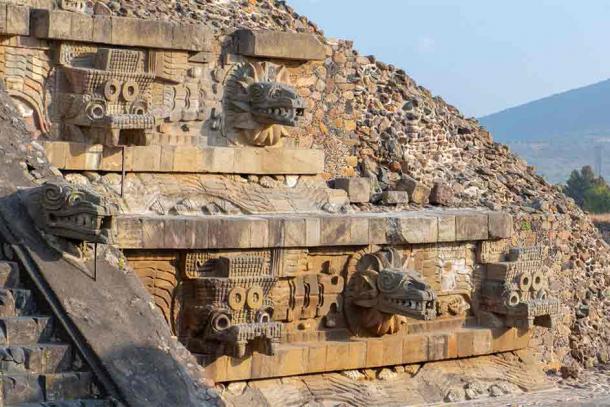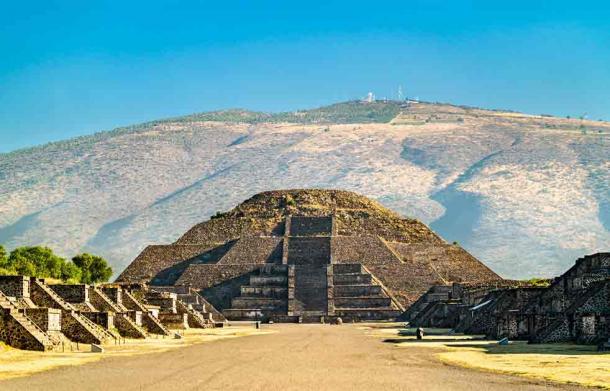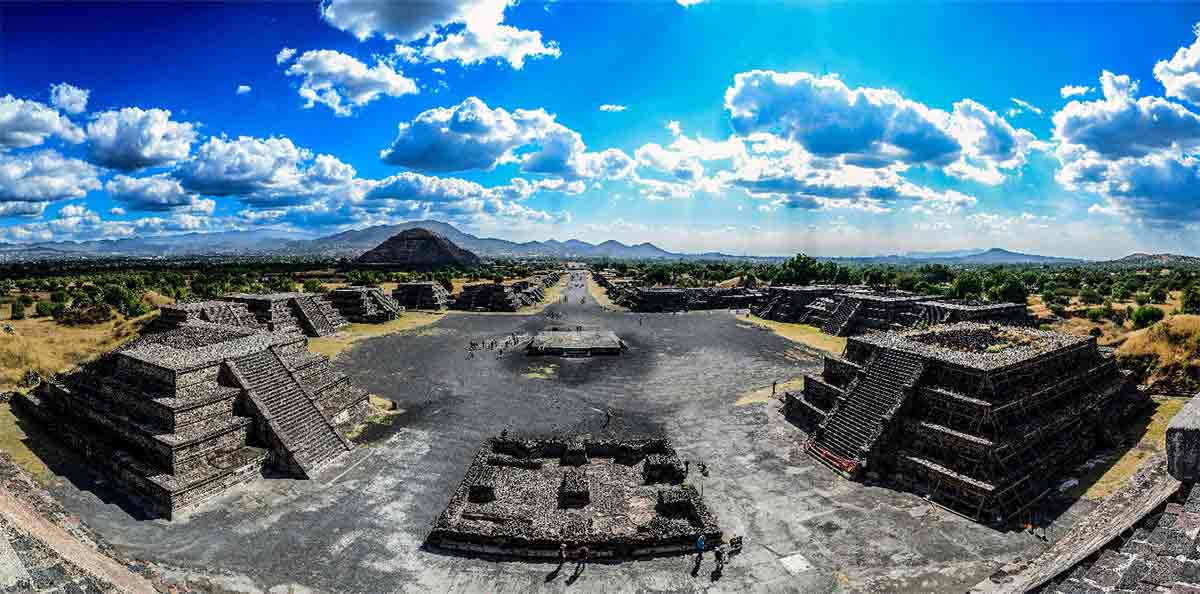New Study Links Decline and Fall of Ancient Teotihuacan to Earthquakes
The reasons for the decline and abandonment of the mighty Mesoamerican city-state of Teotihuacan in the seventh century AD have long remained a mystery. There will always be a degree of speculation involved in explaining why a people who dominated Central Mexico for much of the first millennium were eventually displaced. However, a new study published in the Journal of Archaeological Science: Reports has linked a series of dramatic and massive earthquakes to the ultimate destruction of the Teotihuacan culture, suggesting that the chaos and dislocation caused by chronic seismic activity ultimately made the great city-state uninhabitable.
In their study, an interdisciplinary team of researchers from several academic institutions in Spain and Mexico took a close look at the physical damage observed in some of the grandest and most famous buildings designed by ancient Teotihuacan´s monumental architects. These included the three most famous pyramids from the city: the Pyramids of the Sun and Moon, and the Temple of the Feathered Serpent.

Part of the restored Temple of Quetzalcoatl, the Feathered Serpent, at the Citadel in Teotihuacan in city of San Juan Teotihuacan, State of Mexico, Mexico. (Wangkun Jia/Adobe Stock)
Based on the nature of the damage, the researchers concluded that it must have been caused by massive earthquakes. Over time the negative physical, social, cultural and economic impacts of the earthquakes would have been increasingly difficult to cope with, bringing the once vibrant culture of Teotihuacan to the brink of collapse by around 650 AD.
- The Powerful and Mysterious Spider Woman of Mexico
- Descending into the Underworld of Teotihuacan: Labyrinthine Tunnels and Rivers of Mercury
Earthquakes of Teotihuacan: A Story Told by Physical Ruins
At the height of its prosperity during the Classic Period of Mesoamerican civilization, the city-state of Teotihuacan supported a population of somewhere between 100,000 and 200,000 people. Among its many accomplishments the city was known for its monumental pyramids, palaces and temples, which have stood the test of time and are still around for archaeologists and historians to both study and marvel at.
But close examinations of the three great pyramids of Teotihuacan long ago revealed some fairly significant internal and external damage. There have always been questions about how to best interpret this, but the latest study has identified much of the damage as the type cause by earthquakes.
Examples of the physical trauma the researchers were able to link to seismic activity included broken and chipped pyramid corners, the displacement and rotation of entire masonry blocks, signs of sudden wall collapse, and unique patters of crumbling and cracking that were found in the upper sections of buildings as well as the lower, showing that the force responsible shook the entire structures. They even discovered a new type of earthquake-related trauma, which they identify as the ‘floating-dipping-broken corner.’ This unusual effect was found during examinations of the hanging blocks on the buildings’ facades.
- The Rome of America: What Lies Under Teotihuacan? – The Real City of the Gods
- Secret Chamber and Tunnel Discovered Under the Temple of the Moon at Teotihuacan Emulate the Underworld
None of this would have been caused by weathering, huge storms or attacks by invading armies, the researchers argue. It is best explained, they say, by large-scale or megathrust earthquakes that would have shaken the ground violently enough to displace even the strongest and sturdiest structures in Teotihuacan.
“In total, five ancient earthquakes have been determined from the damage, dated from the Tzacualli cultural period (1–100 AD), to the Xolalpan—Metepec period (450–550 AD),” the researchers, led by geologist Raúl Pérez-López from the Geological and Mining Institute of Spain in Madrid, wrote in their newly published article.
“This proposal does not conflict with other existing theories for the Teotihuacan abrupt collapse, considering that the sudden overlapping of natural disasters like earthquakes could increase internal warfare (uprising), and civil unrest.”
While all of the megathrust earthquakes would have been 8.5 in magnitude or greater, the researchers found that two of the five were especially severe and destructive. One of these occurred in the first century AD, long before the heyday of the Teotihuacan culture in middle part of the first millennium. The second occurred in the fifth century or early sixth century AD, and was followed relatively rapidly (in geological terms) by a somewhat less catastrophic but still highly destructive quake that shook Central Mexico in the late sixth or early seventh centuries.
The researchers believe it was the combined impact of the last two earthquakes that dealt Teotihuacan a fatal blow. The city was gradually abandoned to the elements starting around the year 650, signaling the beginning of the end of the Classic Period of pre-Hispanic Mesoamerican history that marked the highest ascent of the legendary Maya people and their neighboring civilizations, like Teotihuacan.
One of the more fascinating revelations of the new study is that it shows how the architects and builders of Teotihuacan made some adjustments in their building style in response to the recurrence of seismic events.

Pyramid of the Moon at Teotihuacan in Mexico. (Leonid Andronov/Adobe Stock)
In the Pyramids of the Sun and Moon and the Temple of the Feathered Serpent, the quadrangular bases and stepped facades were earthquake-resistant, and they helped these structures survive in a seismically-active zone This style of design would have been a sensible innovation in a location where earthquakes were experienced at regular intervals (there would have been many smaller earthquakes in addition to the megathrust disasters).
Finding the True Source of the Devastating Teotihuacan Earthquakes
The researchers acknowledge their theory can’t directly identify the source of the destructive earthquakes. However, they did notice a pattern of damage in Teotihuacan’s structures that followed a distinctive northwest-to-southeast pattern. They suspect this means the seismic events that plagued Teotihuacan occurred along the Pacific Ocean’s Middle America Trench, a known source of earthquakes for many centuries.
Running along the western coast of Mexico and Central America down to Costa Rica, the Middle America Trench is a geological subduction zone where tectonic plates bump and grind against each other constantly, causing tremors from time to time. The trench is 1,700 miles (2,750 kilometers) long and an incredible 21,880 feet (6,669 meters) deep at some points, and some of the earthquakes that occur along it can be quite powerful, creating reverberations that can be felt far inland. It is a credible cause of the damage found in the Teotihuacan pyramids, although not necessarily the only one as the researchers admit.
New geological studies of the area around the site of ancient Teotihuacan are now expected to be initiated, to see of other signs of ancient and destructive seismic activity can be uncovered. Regardless of the source of the past megathrust earthquakes, it is clear they occurred and must have been experienced as civilization-altering events.
Top image: Avenue of the dead, Teotihuacan, now thought t have declined due to earthquakes. Source: rafalkubiak/Adobe Stock
By Nathan Falde

















